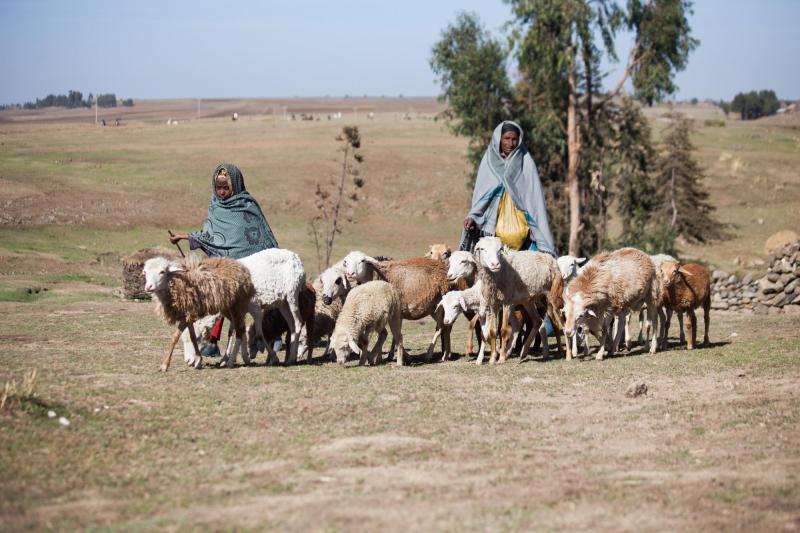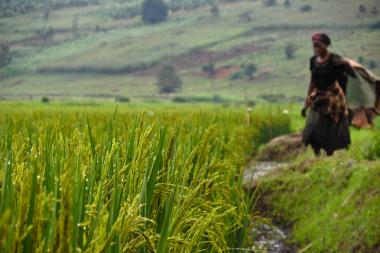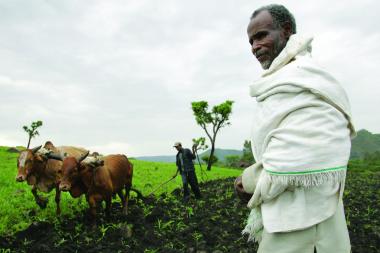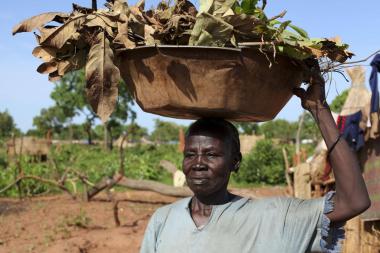The role of development finance institutions in addressing food security in vulnerable contexts
The challenges of food security and economic development in fragile contexts have become urgent. This report asks what more can be done to address food security in such contexts using private sector solutions.
The challenges of food security and economic development in fragile contexts – low- and middle-income economies frequently subject to conflict, political instability, macroeconomic deficits and natural disasters, the effects of which commonly interact – are difficult to address. Fragile economies can grow, but all too often the gains from a growth spurt are lost to recessions. Running businesses can be difficult; business failure is more likely in settings of fragility, violence and conflict. Countries in fragile and conflict-affected situations thus tend to have fewer and smaller investment opportunities. They have fewer sponsors that meet the scale, standards and financial backing of commercial investors and lenders.
Can working with development finance institutions (DFIs) and private firms help alleviate food insecurity? Operating in fragile contexts challenges DFIs, whose mandate often requires them to invest funds without a loss. But it is not impossible.
This report focuses on 14 countries (also called the 10+1 group) seen by the UK Foreign & Commonwealth Development Office (FCDO) as especially at risk of food crises, emergencies and famine: Afghanistan, Central African Republic (CAR), Democratic Republic of Congo (DRC), Ethiopia, Nigeria, Somalia, South Sudan, Sudan, Syria and Yemen and the region of Burkina Faso, Chad, Mali and Niger. It examines DFI practices and investments, and discusses the ways in which DFIs can become more interested in investing in the 10+1 countries, especially to address food security.
Key messages:
- DFI investments can contribute to food security in the 10+1 countries through two channels: either by raising productivity anywhere in the economy, thereby potentially increasing incomes, which would then allow people to access more food; or by directly investing in farms and agribusiness in the food supply chain to raise food output and agricultural and agribusiness productivity, reduce costs and thereby increase the availability of food and reduce its cost to consumers.
- The 10+1 countries generally lack capital to invest. DFIs should therefore be a valuable source of additional capital. The report identifies opportunities to address constraints in food value chains, with examples from Ethiopia and Somalia. In practice, however, DFIs invest little in fragile states in general, and in the 10+1 group in particular. Only 5% (2.5% excluding Nigeria) of DFI investment goes to the 10+1 countries. DFIs invest in agriculture and its value chains even less. DFIs face mixed incentives and regulatory frameworks, and see few opportunities to invest more in fragile contexts or in food security.
- DFI managers told us they could not find companies and projects in which they could invest with risks they could tolerate, with the returns they expected, and on a scale that covered the administrative costs of allocating, disbursing and monitoring use of DFI funds. Most businesses that could benefit from more capital face too much risk for the DFIs: the firms are often so small that DFI administrative costs per dollar disbursed are too high. They may not have the required audit standards to be eligible for investment.
- When DFIs do find investible companies in the 10+1 countries, they often invest in the same company, so that some well-run (or fortunate) enterprises benefit disproportionately from DFI finance. It is hard to imagine that there are no other investible firms: the way that DFIs converge on a handful of enterprises suggests herd behaviour. Hence, the potential of DFIs to finance companies and projects that would improve food security in the 10+1 group is not sufficiently realised.
- Thare are several ways to incentivise DFIs to invest in these countries. Ways forward include: to blend the near-commercial finance of the DFIs with concessional funds that neither demand low risk nor expect full repayment; to create the conditions for and develop companies that are ready to receive DFI finance; and to try to lower the transactions costs of lending in 10+1 countries, by devolving DFI finance to funds based in country.
- Further thinking is also required. For example, are there particular activities where DFI finance could be most effective to support food security? Just which companies would benefit most from capital, and which companies are most limited by capital, is something to be judged case by case. Investments in transport may be one of the better bets: transport costs are often high in fragile contexts and reducing unit transport costs can lower the cost of food to everyone’s benefit. Roads and ports may well generate high social returns.



